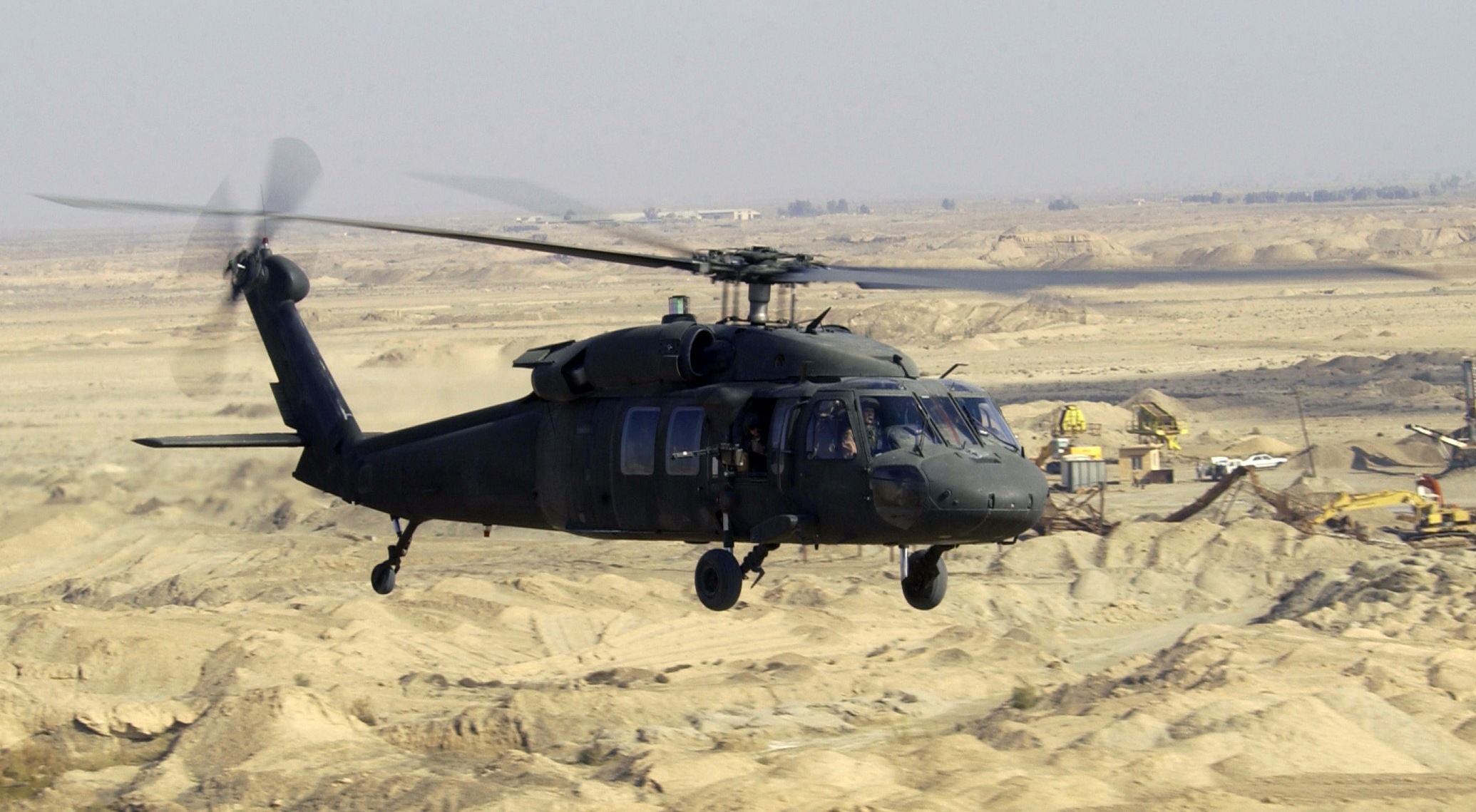UH-60 Blackhawk Helicopter: Contrast with Other Armed Force Airplane
UH-60 Blackhawk Helicopter: Contrast with Other Armed Force Airplane
Blog Article
Inside Out of UH 60 Helicopter: Highlighting Its Benefits and Secret Elements
The UH-60 helicopter stands as a stalwart in army and private air travel, renowned for its versatility and dependability in a variety of missions. As we venture inside the elaborate mechanics and modern technology that compose this aircraft, a globe of advantages and key elements arise, dropping light on the intricacies that add to its functional excellence. From its robust engine system to the innovative avionics and navigation features, each element plays a vital role in the seamless performance of the UH-60. Remain tuned as we unwind the internal operations of this aerial wonder, supplying understandings into the careful maintenance procedures and rigid safety and security measures that guarantee its continued success overhead.
UH-60 Helicopter Advantages
Sometimes praised for its convenience and reliability, the UH-60 helicopter attracts attention as a very helpful airplane in armed forces operations. Created largely for army transportation, air attack, clinical discharge, and reconnaissance missions, the UH-60 Black Hawk helicopter offers a myriad of advantages that make it a foundation of military aeronautics.

Moreover, the UH-60 is renowned for its durable design and effective engines, which allow it to carry hefty payloads over significant distances. This capacity is important for transporting troops, tools, and materials to remote or aggressive areas rapidly and efficiently. Overall, the UH-60 helicopter's combination of convenience, integrity, and efficiency make it a crucial possession in modern armed forces procedures.

Engine System Overview
The engine system of the UH-60 helicopter is an important element that plays a critical role in making sure the airplane's performance and operational abilities. The UH-60 is powered by 2 General Electric T700-GE-701D turboshaft engines, giving it with the necessary power for a variety of goals, consisting of troop transportation, medical discharge, and combat support. These engines are known for their integrity, power output, and efficiency, making them well-suited for the requiring demands of armed forces procedures.

Avionics and Navigating Functions
Provided the critical function of the engine system in making certain the UH-60 helicopter's performance, the avionics and navigation visit this website features stand as vital components that enhance the aircraft's operational capacities and mission effectiveness. The UH-60 helicopter is equipped with sophisticated avionics systems that offer essential details to the pilot for secure and effective flight procedures. Overall, the avionics and navigating attributes play a crucial function in enhancing situational recognition, functional efficiency, and mission success for the UH-60 helicopter.
Trick Elements Malfunction

Checking out the elaborate mechanics of the UH-60 helicopter reveals a detailed failure of its crucial parts. At the heart of the UH-60's capability is its main blades system, being composed of the major rotor blades, hub, and transmission system.
The UH-60 likewise features a robust powerplant, generally two turboshaft engines, such as the General Electric T700-GE-701D. These engines you can try here give the required power to drive the helicopter's blades and systems efficiently. Additionally, the UH-60's landing equipment system, including visit site the wheels, shows off, and shock absorbers, sustains secure departures and touchdowns in numerous atmospheres.
Other essential parts include the flight control system, hydraulic system, and avionics suite, all of which add to the UH-60's adaptability and objective abilities. uh-60 blackhawk. Comprehending these essential parts is critical for valuing the UH-60 helicopter's integrity and efficiency popular operational scenarios
Upkeep and Security Protocols
What are the crucial upkeep practices and safety methods that make certain the UH-60 helicopter's operational preparedness and crew well-being? Maintaining the UH-60 helicopter includes strenuous adherence to set up inspections, regular checks, and aggressive part substitutes.
Before each flight, pre-flight checks are conducted to confirm that all systems are functioning properly. Adhering to weight limits, doing correct tons computations, and ensuring the right circulation of weight within the airplane are also essential security actions that add to total operational safety and security.
Conclusion
Finally, the UH-60 helicopter uses countless advantages, including its functional engine system, progressed avionics and navigating functions, and essential elements that improve its performance. uh-60 blackhawk. By complying with rigorous upkeep and safety methods, the UH-60 helicopter makes certain optimum operation and reliability. Its effective design and capability make it an important property in various armed forces and private procedures
Report this page